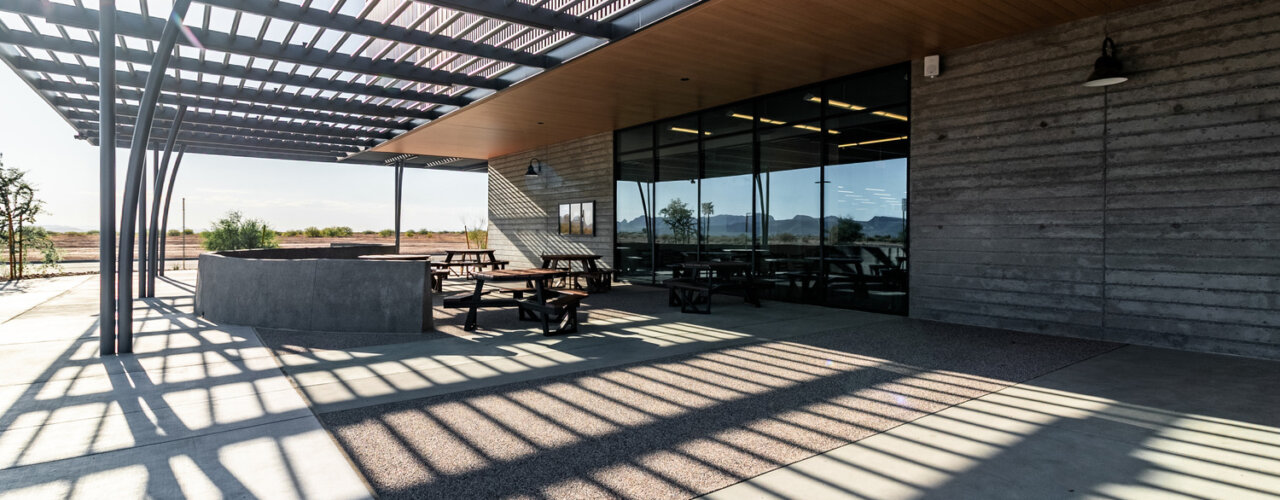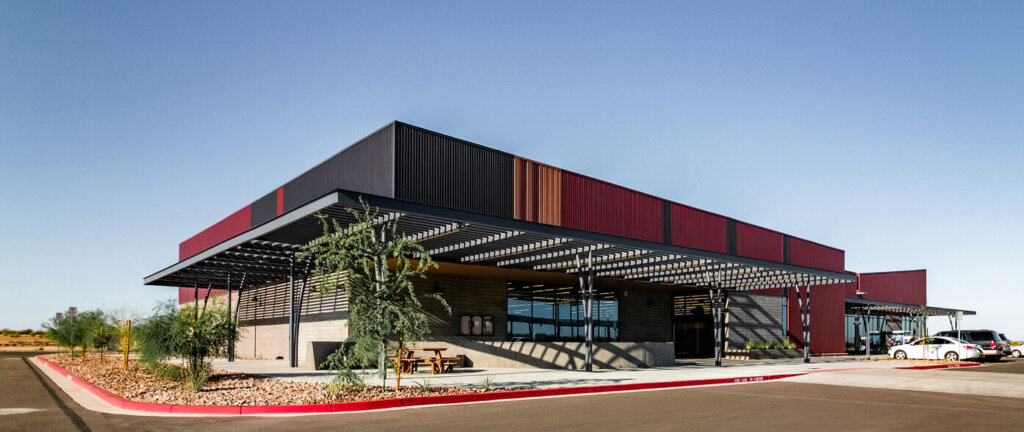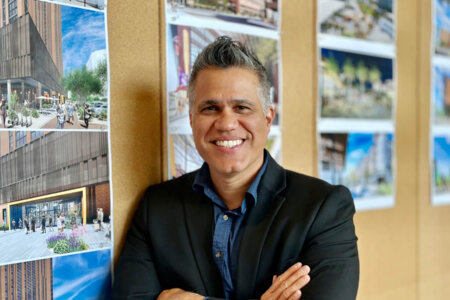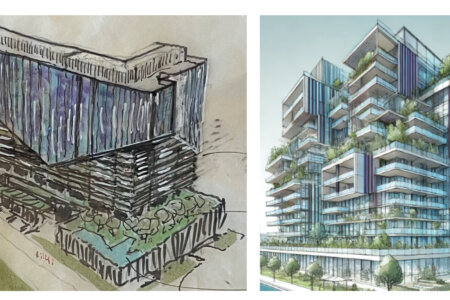The Bedrock of Community: Sacaton Market

RSP’s Victor Irizarry and Naveen Chopra explain how our design for Sacaton Market, a neighborhood market in Gila River Indian Community southeast of Phoenix, touches on the essence of community and proves that small gestures can have a big impact.
The fabric of community often relies on a few fundamental threads: a convenient place to connect with neighbors, access to groceries and essentials, a platform to exchange goods and services, and an architecture that speaks to culture and place. These exact elements stand at the core of RSP’s design for the long-awaited Sacaton Market. The market opened its doors last month to an enthusiastic community of some 13,000 residents, many of whom would previously drive more than 30 minutes to the nearest grocery store.
Gila River Indian Community Governor Stephen Roe Lewis and Lt. Gov Regina Antone led the opening ceremony, cutting the ribbon to a cheering crowd of waiting customers. The market offers locally sourced products as well as a bakery, deli, hot food bar, shelf-stable products, outdoor seating and a place for food vendors and artisans to set up and sell their items.

As we worked on the project, and drew closer to the community, it became abundantly clear that this 14,000-SF market was much, much more than a neighborhood store. Located on Gila River Indian Community land southeast of Phoenix, AZ, this honest, unassuming project quadruples the amount of grocery space in what had become a food desert. And it continues the momentum of economic development sparked by a number of civic initiatives in the region. But it also offers deeper connections for the local residents.
“It’s difficult finding reputable vendors who are willing to bring us goods and services at a fair price,” says Duncan Winston, the store’s general manager. “We want to be able to fight for ourselves and bring the necessary goods to our community when we need them.”
Now that the market is open, they can do just that.

RSP’s design takes its cues from the patterns of the surrounding farmland and taps into the Hohokam tradition of “making the desert bloom.” The architecture relies on an efficient palette of modest, durable materials like board-formed cast-in-place concrete and corrugated metal panels to accommodate the extreme climate and create rhythm and visual interest.
We wanted to minimize the building’s profile on the landscape, so massing draws inspiration from the surrounding mountains in the distance and the colors of the land after a desert monsoon. The shade canopy, supported by elegant dual columns, reduces solar impact and create a pleasant “front porch” where customers and community members can gather, socialize and share a meal. This shade structure is inspired by the “watto” or “ramada” approach that adapts to the desert climate rather than deny it.
The simple, uncluttered site plan accommodates the store, a 10-bay fueling station, and a dedicated area for local vendors and makers to sell their products. The landscaping features indigenous, low-irrigation plantings throughout to soften edges and define both pedestrian and vehicular circulation. A rain chain drops from the roof, guiding rainwater into a bioswale and creating a special moment along the facade. The rain catcher is part of a larger resilient landscaping approach that recalls the irrigation systems of the Hohokam and draws attention to the life-or-death importance of water in the desert.
The Sacaton Market speaks to the essence of community and the role architecture plays in enriching that core. It’s a modest project in scale, yet its impact reaches far beyond its footprint, serving as a reminder of why we chose this profession in the first place.






